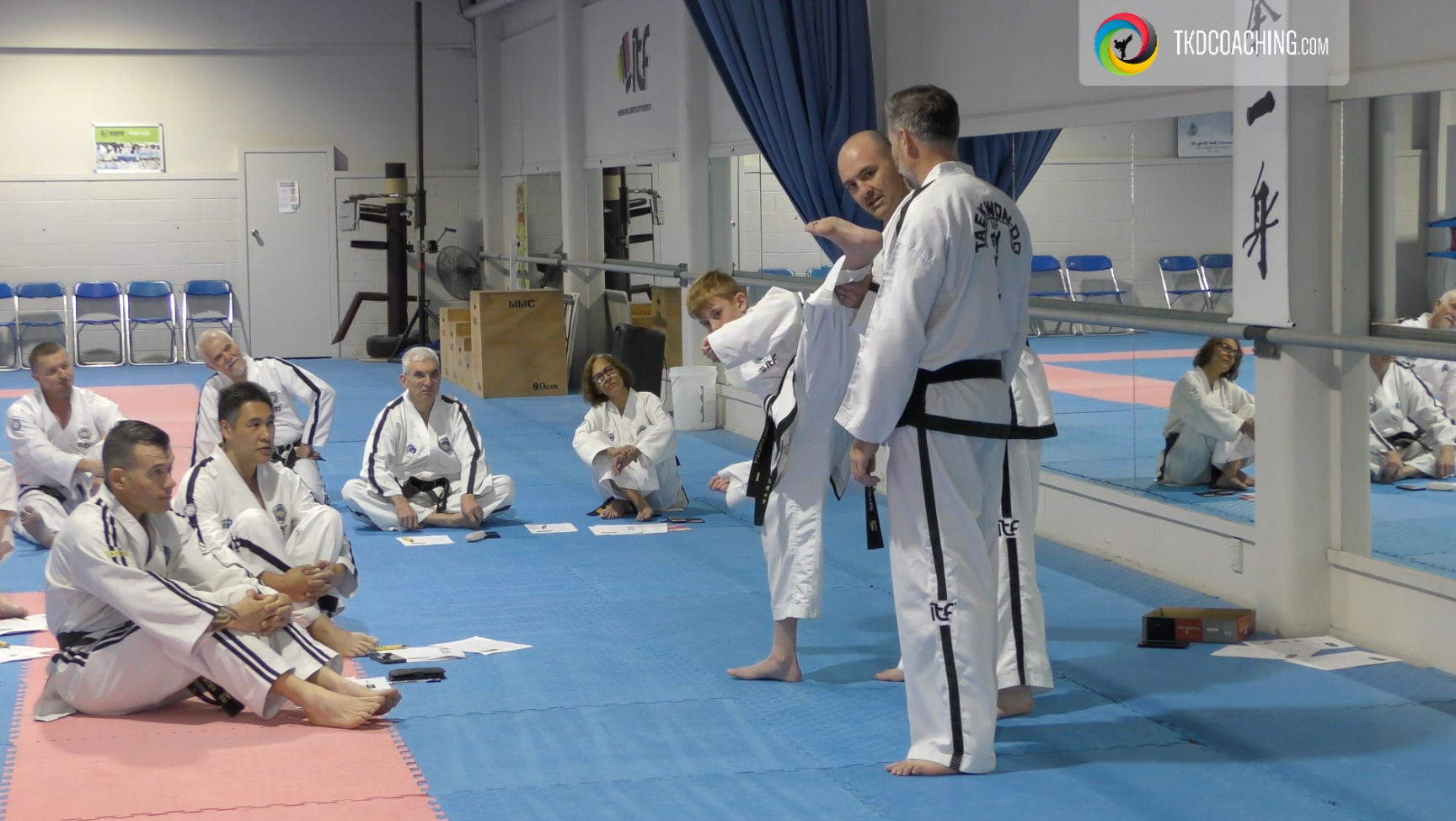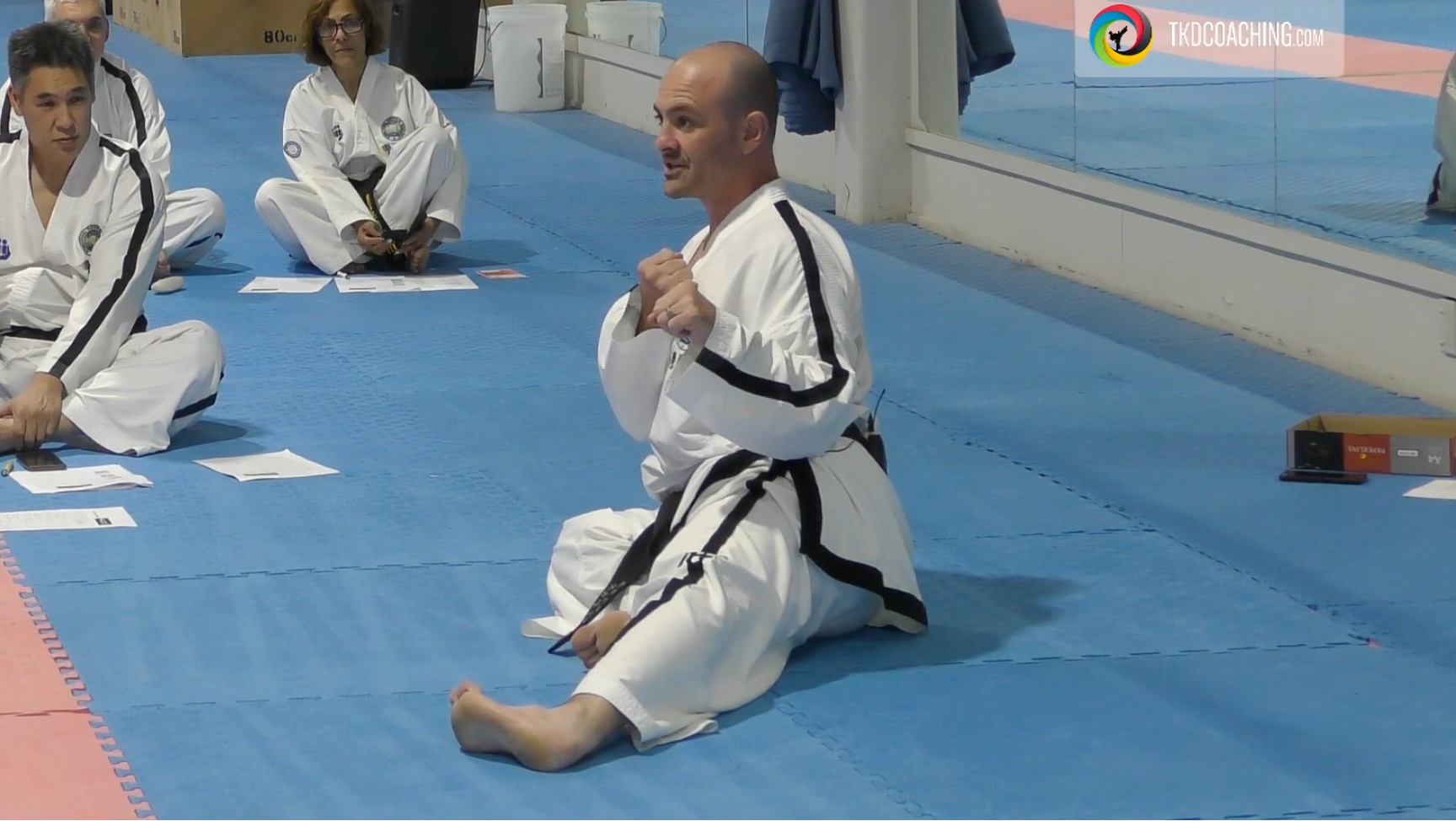The Part – Whole Approach
The Part–Whole Approach with Brendan Doogan
This session comes from an ITFNZ Instructors Course that has been edited for clarity and flow. While the content is aimed primarily at instructors, anyone wanting to refine their kicking techniques or improve their coaching structure will benefit enormously from this part–whole approach to teaching Taekwon-Do.
What You’ll Learn
In this video, Mr Brendan Doogan breaks down the Part–Whole Approach — a proven coaching method used across many sports to teach complex skills more effectively. Instead of tackling a technique in one go, you learn how to break it into meaningful, manageable components, before reassembling them into a fully integrated movement. It’s an ideal way to teach difficult kicks and advanced combinations in ITF Taekwon-Do.

Throughout the session, Mr Doogan demonstrates:
✔ How to Identify the Parts of a Complex Skill
He begins by showing a familiar movement that requires the coordination of all four limbs — the perfect example of a technique that becomes far easier to teach when broken into pieces. By clearly identifying the “parts” first, he shows how instructors can remove confusion and help students focus on one element at a time.
✔ Demonstration and Modelling
You’ll see how he presents both written and live examples, uses task sheets with highlighted key points, and demonstrates the movement step-by-step. Participants follow QR codes to view a split-movement demonstration that captures the essence of the technique without the unnecessary complexity. This modelling makes it easy for instructors to copy the same process when teaching their own classes.
✔ Checking for Understanding
Mr Doogan shows how good coaches confirm that their learners understand both the purpose and the requirements of the task. This includes targeted questions, re-demonstrations, and guiding pairs through their own examples. Rather than assuming students “get it”, he demonstrates how to check comprehension in a simple, practical way.
✔ Coaching Coaches
One of the most valuable parts of this session was having instructors explain their own part–whole teaching examples. Mr Doogan moves between groups, offering feedback, asking them to verify one another’s ideas, and giving permission to sign off each other’s learning outcomes once the task is completed. It’s a powerful look at how to coach coaches, not just students.
Why This Matters for Taekwon-Do Instructors
The Part–Whole Approach helps instructors:
Teach difficult kicks and complex techniques more effectively
Help students understand why a technique works, not just how it looks
Reduce overwhelm for beginners by simplifying what they focus on
Improve precision and quality for advanced practitioners
Build confidence when coaching groups of any size or level
If you teach Taekwon-Do — even casually — this method will elevate the way you break down techniques and how your students learn them. It provides a clear framework you can use for kicks, hand techniques, patterns, and even sparring drills.

Watch the Video
Included for all TKDCoaching members.
Want the full video? Become a member today →
Grand Master Paul McPhail
-
Check out all our Instructing VideosCheck out all our Instructing Videos
-
Watch the full video with a TKDCoaching membership →Watch the full video with a TKDCoaching membership →
-
Back to Inside TKDCBack to Inside TKDC
